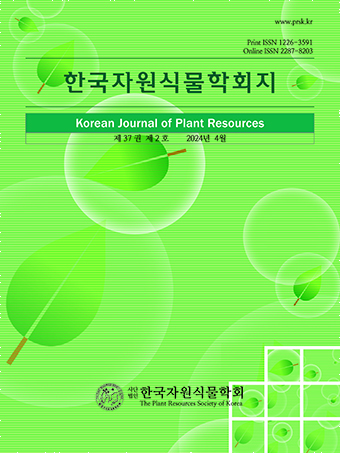Research Article
Abstract
References
Information
Lee, G.J. 2018. Improvement of cultural method and introduction of perennial crop for the reduction of environment loading in slope upland of highland. Highland Agriculture Reserch Institute, National Institute of Crop Science, Rural Development Administration. Pyengchang, Korea. pp. 4-51 (in Korean).
- Publisher :The Plant Resources Society of Korea
- Publisher(Ko) :한국자원식물학회
- Journal Title :Korean Journal of Plant Resources
- Journal Title(Ko) :한국자원식물학회지
- Volume : 33
- No :1
- Pages :15-23
- Received Date : 2019-08-15
- Revised Date : 2019-12-19
- Accepted Date : 2020-01-07
- DOI :https://doi.org/10.7732/kjpr.2020.33.1.15




 Korean Journal of Plant Resources
Korean Journal of Plant Resources







